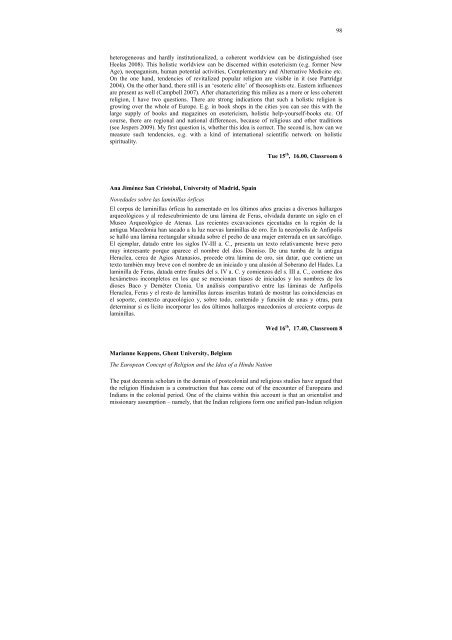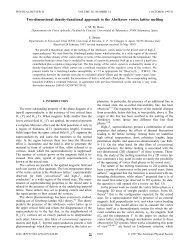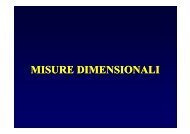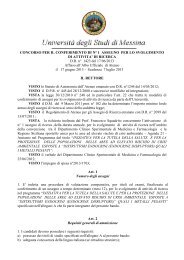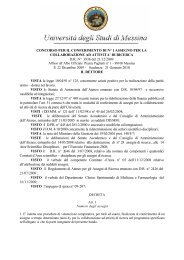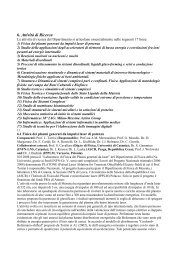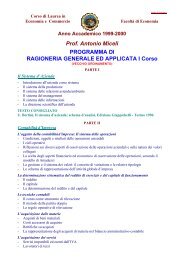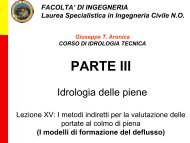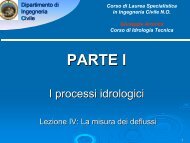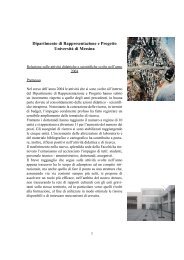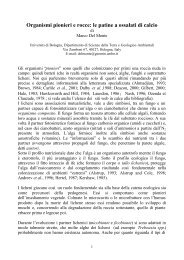PROGRAMME AND ABSTRACTS - Università degli Studi di Messina
PROGRAMME AND ABSTRACTS - Università degli Studi di Messina
PROGRAMME AND ABSTRACTS - Università degli Studi di Messina
You also want an ePaper? Increase the reach of your titles
YUMPU automatically turns print PDFs into web optimized ePapers that Google loves.
heterogeneous and hardly institutionalized, a coherent worldview can be <strong>di</strong>stinguished (see<br />
Heelas 2008). This holistic worldview can be <strong>di</strong>scerned within esotericism (e.g. former New<br />
Age), neopaganism, human potential activities, Complementary and Alternative Me<strong>di</strong>cine etc.<br />
On the one hand, tendencies of revitalized popular religion are visible in it (see Partridge<br />
2004). On the other hand, there still is an ‘esoteric elite’ of theosophists etc. Eastern influences<br />
are present as well (Campbell 2007). After characterizing this milieu as a more or less coherent<br />
religion, I have two questions. There are strong in<strong>di</strong>cations that such a holistic religion is<br />
growing over the whole of Europe. E.g. in book shops in the cities you can see this with the<br />
large supply of books and magazines on esotericism, holistic help-yourself-books etc. Of<br />
course, there are regional and national <strong>di</strong>fferences, because of religious and other tra<strong>di</strong>tions<br />
(see Jespers 2009). My first question is, whether this idea is correct. The second is, how can we<br />
measure such tendencies, e.g. with a kind of international scientific network on holistic<br />
spirituality.<br />
Ana Jiménez San Cristobal, University of Madrid, Spain<br />
Novedades sobre las laminillas órficas<br />
98<br />
Tue 15 th , 16.00, Classroom 6<br />
El corpus de laminillas órficas ha aumentado en los últimos años gracias a <strong>di</strong>versos hallazgos<br />
arqueológicos y al redescubrimiento de una lámina de Feras, olvidada durante un siglo en el<br />
Museo Arqueológico de Atenas. Las recientes excavaciones ejecutadas en la región de la<br />
antigua Macedonia han sacado a la luz nuevas laminillas de oro. En la necrópolis de Anfípolis<br />
se halló una lámina rectangular situada sobre el pecho de una mujer enterrada en un sarcófago.<br />
El ejemplar, datado entre los siglos IV-III a. C., presenta un texto relativamente breve pero<br />
muy interesante porque aparece el nombre del <strong>di</strong>os Dioniso. De una tumba de la antigua<br />
Heraclea, cerca de Agios Atanasios, procede otra lámina de oro, sin datar, que contiene un<br />
texto también muy breve con el nombre de un iniciado y una alusión al Soberano del Hades. La<br />
laminilla de Feras, datada entre finales del s. IV a. C. y comienzos del s. III a. C., contiene dos<br />
hexámetros incompletos en los que se mencionan tíasos de iniciados y los nombres de los<br />
<strong>di</strong>oses Baco y Deméter Ctonia. Un análisis comparativo entre las láminas de Anfípolis<br />
Heraclea, Feras y el resto de laminillas áureas inscritas tratará de mostrar las coincidencias en<br />
el soporte, contexto arqueológico y, sobre todo, contenido y función de unas y otras, para<br />
determinar si es lícito incorporar los dos últimos hallazgos macedonios al creciente corpus de<br />
laminillas.<br />
Marianne Keppens, Ghent University, Belgium<br />
The European Concept of Religion and the Idea of a Hindu Nation<br />
Wed 16 th , 17.40, Classroom 8<br />
The past decennia scholars in the domain of postcolonial and religious stu<strong>di</strong>es have argued that<br />
the religion Hinduism is a construction that has come out of the encounter of Europeans and<br />
In<strong>di</strong>ans in the colonial period. One of the claims within this account is that an orientalist and<br />
missionary assumption – namely, that the In<strong>di</strong>an religions form one unified pan-In<strong>di</strong>an religion


